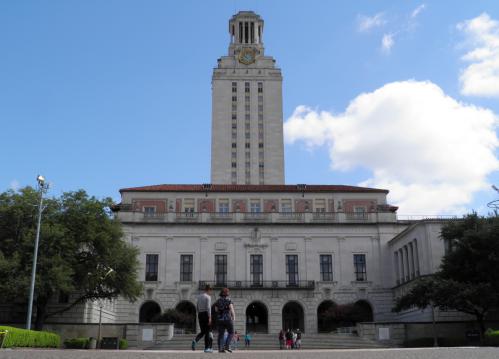While national media headlines in recent weeks have been flooded with stories on K-12 education funding deficits and teacher walkouts, higher education funding shortfalls have been equally severe, if not more so, in some states. Economists estimate that state appropriations for higher education fell by 30 percent from the 1970s to the early 2000s, which has left many strained public universities with no choice but to raise tuition, effectively shifting the burden of paying for college onto students and families. In turn, state disinvestment has undermined college affordability for many disadvantaged students, and at the same time threatened the economic well-being of industries that rely upon educated workers.
As a result of these problematic shifts in higher education finance, state leaders have implemented lottery earmark policies aimed at providing supplementary funding for struggling higher education institutions and students. In fact, as of 2009, 25 states adopted lottery earmark policies with the intent to supplement higher education budgets. However, whether lottery earmarks end up supplanting instead of supplementing education funding remains up for debate. In this post, we describe a recent paper in which we explore the effects these earmark policies have on higher education spending.
What we know about the effect of earmarks from the K-12 context
At the K-12 level, where almost all of the research on earmarks has occurred, scholars have come to very different conclusions on whether lottery earmarks end up replacing education funding. Some scholars have argued that lottery earmarks provide a net positive impact, despite some fungibility. One study, for example, estimated that a dollar of lottery earmark funds for K-12 education increased per pupil spending by 50 to 70 cents, with the rest of the money being diverted for other purposes. Others have argued that lottery earmarks lead state lawmakers to supplant education funding so much that states invest less in education over the long run.
This is because budget decisions are made in context of scarcity, in which allocating resources to one arena of state policy limits the ability to fund other programs. Therefore, when lottery earmark revenue emerges, state lawmakers may use lottery earmark revenue to supplant instead of supplement education funding so that they can free up general fund money for other purposes that matter to their constituents and avoid raising taxes in the process.
New research on how earmarks affect higher education spending
Our recently published article is the first to evaluate the impact of lottery earmarks in the higher education arena, despite the widespread use of lottery earmarks for higher education. We argue that higher education is an especially important context in which to study lottery earmarks because higher education budgets are especially erratic due to both economic and political factors. In fact, appropriations to higher education have been described as the most elastic category of state budgets. Furthermore, unlike with Title I funds in the K-12 context, there are few safeguards, if any, in place to ensure that state leaders use state lotteries to supplement and not substitute funding for higher education. With that in mind, the impact of allocating lottery earmark funds to state higher education budgets requires closer examination.
Our article investigates whether lottery earmarks supplemented or supplanted higher education appropriations and state merit-based and need-based grant aid. To do so, we collected data from all 50 states over a 20-year period (1990-2009) on state appropriations to higher education, state expenditures on merit-based and need-based financial aid, and a host of political and economic control variables. In addition, we gathered information on the variation in the structure of the lottery earmarks for higher education across the 25 adopting states. We determined that while some lottery earmarks were used to create specific scholarships or dedicated to capital improvements, other programs did not offer guidance on how the funds should be used (see the full paper for details).
Our analyses demonstrate that lottery earmarks have a significant positive supplementary effect on higher education appropriations. Specifically, we find an approximately 5 percent increase in appropriations to higher education starting in the second year following lottery earmark implementation. Moreover, even when we subtract out the non-tax revenue supporting higher education appropriations, which includes lottery earmark funds and tobacco settlements, we still observe a positive impact on appropriations to higher education.
However, we also uncover what we consider troublesome dynamics in the impact of state lottery earmarks and state grant aid. We find that lottery earmarks have a large and positive impact on merit-based financial aid. On the other hand, we find a strong negative relationship between lottery earmarks and need-based aid. In fact, after the implementation of lottery earmarks to higher education, states reduced need-based aid by approximately 12 percent. While explaining the underlying reason for this shift is beyond the scope of our study, it seems plausible that state lawmakers could be responding to affluent constituents that prefer state investment in merit-based aid rather than need-based aid. This is especially conceivable considering the political science research suggesting that government is more responsive to the preferences of affluent citizens relative to low-income citizens.
Implications
In summary, we find that lottery earmarks increase state higher education funding through appropriations and merit-based financial aid. At the same time, our findings demonstrate that lottery earmarks may worsen the situation for disadvantaged students by supplanting need-based financial aid. These dynamics are especially problematic in light of research revealing that merit-based aid exacerbates inequality while need-based aid helps alleviate existing inequality. Therefore, while lottery earmarks may be appealing to state lawmakers interested in addressing declining college affordability, the supplementary impacts of earmarks on appropriations and merit-based aid may be undermined if they come at the expense of funding for need-based aid.







Commentary
Who wins and who loses when states earmark lottery revenue for higher education?
May 9, 2018